The Economics and Statistics Division maintains archives of previous publications for accountability purposes, but makes no updates to keep these documents current with the latest data revisions from Statistics Canada. As a result, information in older documents may not be accurate. Please exercise caution when referring to older documents. For the latest information and historical data, please contact the individual listed to the right.
<--- Return to Archive
For additional information relating to this article, please contact:
October 25, 20172016 CENSUS: HOUSING Results from the October 25 release of data from the 2016 Census provide detailed information on Canadians' housing situation, including the types and ages of dwellings in which Canadians live, their tenure (ownership versus renting) and the cost of shelter relative to income.
Across Canada, the single-detached house remains the most common form of housing type, accounting for 53.6 per cent of the population's housing. This is followed by apartments in low rise buildings (
In Nova Scotia, there is a much higher share of the population living in single-detached dwellings (65.5 per cent) while there are fewer in apartments. A higher share of single-detached dwellings is common throughout Atlantic Canada as well as the prairie provinces. In Provinces with more urban populations, the share of population in single detached dwellings is notably lower, particularly in Quebec, which has the highest portion of the population living in high rise apartments.
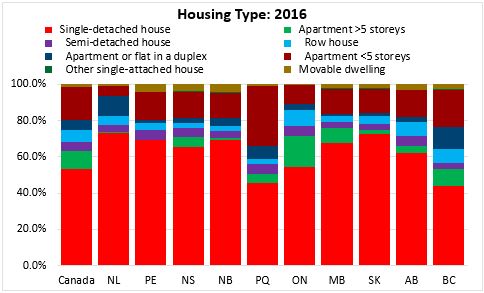
Within Nova Scotia, communities outside Halifax account for the higher proportion of the population living in single-detached dwellings. In Halifax, just under half the population lives in single-detached homes and a higher portion lives in apartments (including condos).
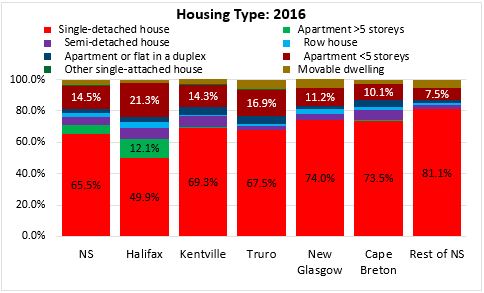
The age of the housing stock is older in Nova Scotia. Manitoba, Nova Scotia and Prince Edward Island all have a relatively high share of the population living in homes built prior to 1960. Nova Scotia has the smallest portion of the population living in housing built since 2006 at 10.9 per cent. In contrast, the newest housing accounts for 22.5 per cent of the population's dwellings in Alberta.

Living in older housing is particularly common in parts of the province outside Halifax, with notably older housing in New Glasgow, Cape Breton and the province's smaller communities.
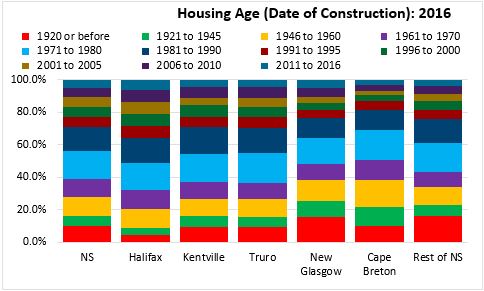
Compared with the national average of 67.8 per cent, Nova Scotians have a higher likelihood of living in a dwelling they own. Rented accommodation is lower than the national average in Nova Scotia. Home ownership is lowest in Quebec where the highest proportion of renters are found.
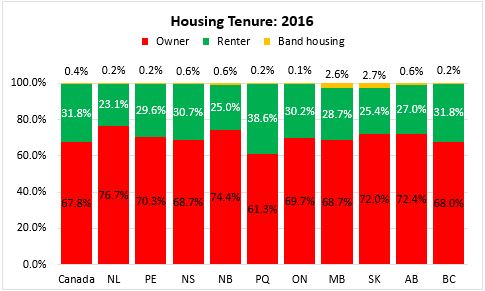
Within Nova Scotia, rental is notably higher in Halifax, and lower in Cape Breton, New Glasgow and smaller communities. Home ownership is least common in Halifax at 60.1 per cent and highest in the smaller communities at 78.5 per cent.
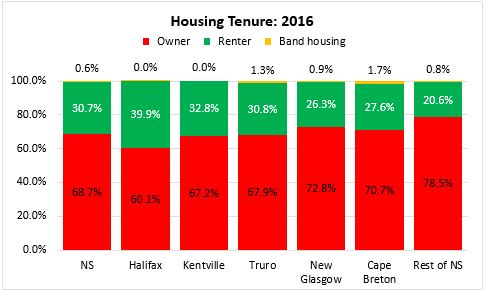
Home ownership is substantially different across Canada depending on different types of family structure. Over 80 per cent of couples (either with or without children) own their dwelling - with a higher share in Atlantic Canada and a lower share in Quebec, Ontario and British Columbia. In households likely to have only one income, such as lone-parent families and one-person households the share of home ownership drops to about 50 per cent. Even fewer households with two persons in a non-census-family arrangement are home-owners.

Relatively higher home ownership rates outside of Halifax extend across all types of family structures.

Statistics Canada's Census compares total shelter costs with incomes. Unsurprisingly, those households with more potential earners (couples and two-or-more non-census family households) are more likely to fall below the 30 per cent shelter-cost-to-income ratio. A higher portion of households who likely rely on a single income (ie: lone-parent families and one-person households) are shown to spend more than 30 per cent of their income on shelter costs. Still, more than half of these households spend less than 30 per cent of their income on shelter.
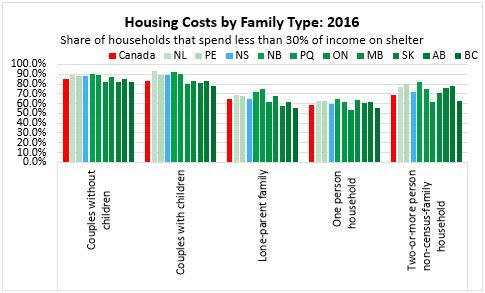
In Nova Scotia, nearly 90 per cent of couples spend less than 30 per cent of their income on shelter. The share of other types of families spending less than 30 per cent of their incomes on shelter is similar to the national average.
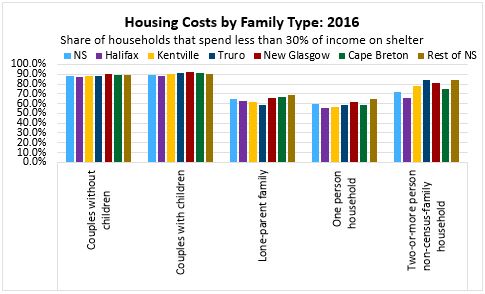
Home ownership increases across age cohorts. However, in Nova Scotia, a lower portion of younger populations (under 34) own a home than their counterparts across the country, particularly in Halifax. However, among older cohorts, the share of Nova Scotians who own a home rises to higher than the national average, especially among populations living outside the province's major centres.
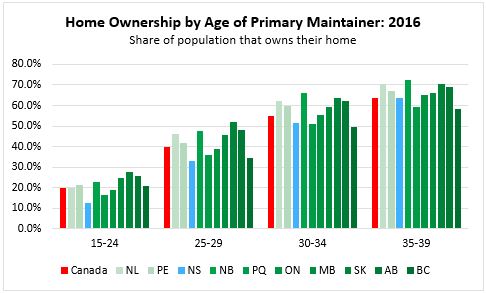
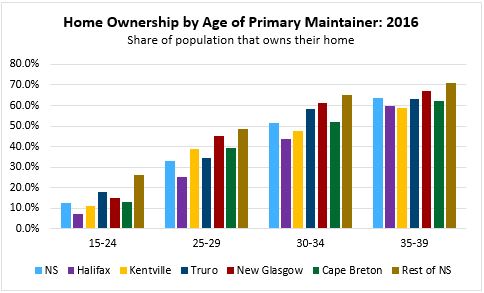
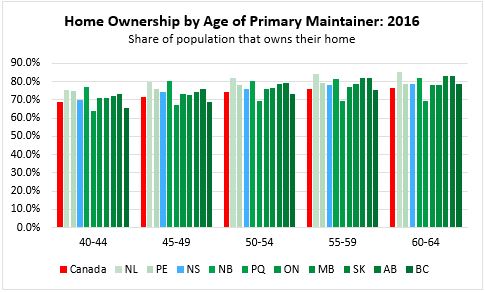
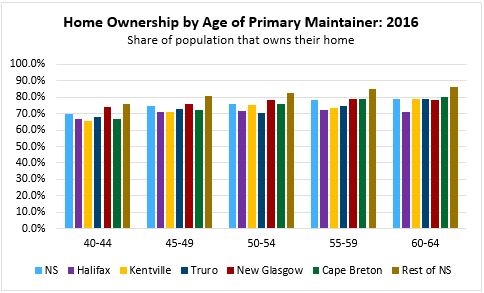
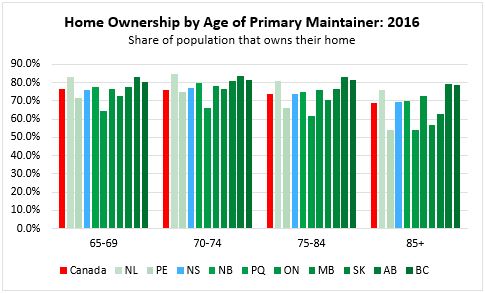
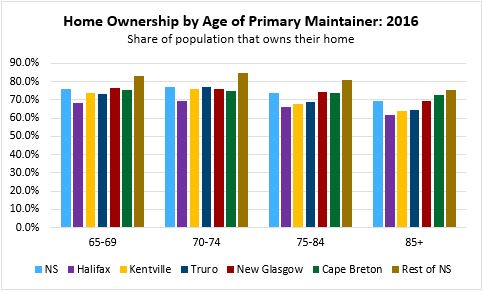
For more information, see Statistics Canada's article and associated data on the Census page.
<--- Return to Archive